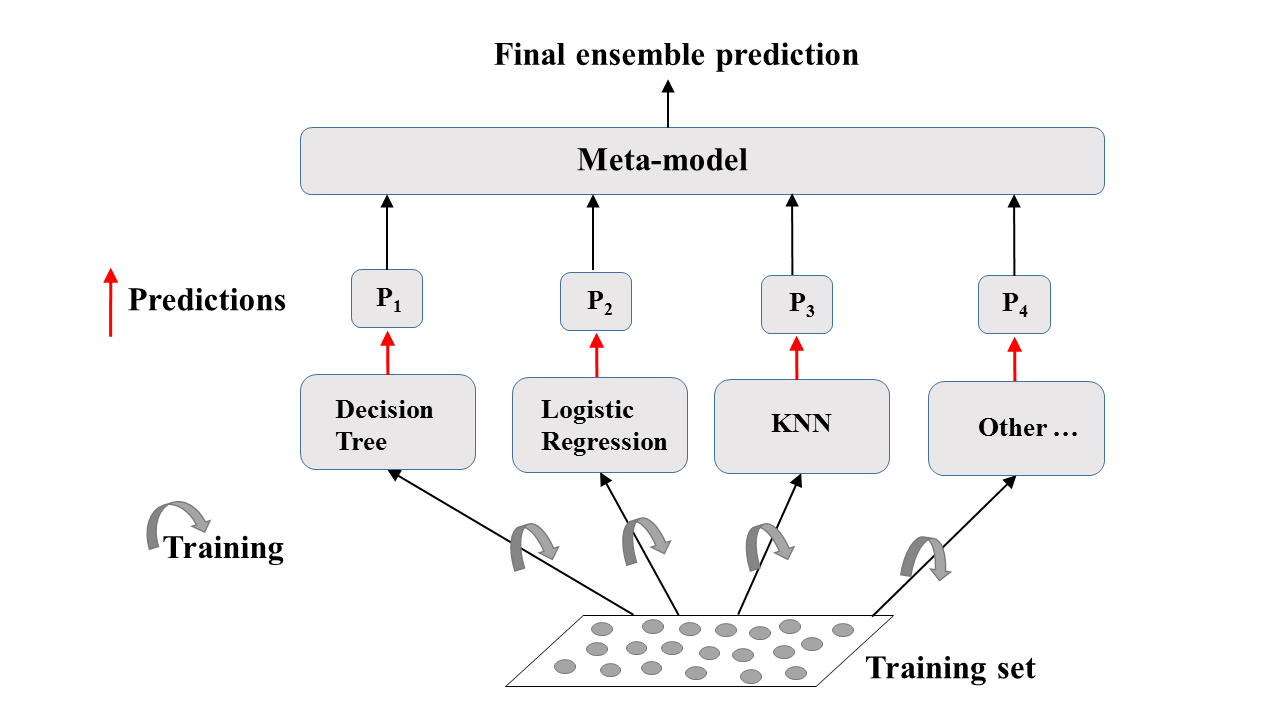Ensemble Learning
Machine Learning with Tree-Based Models in Python

Elie Kawerk
Data Scientist
Advantages of CARTs
Simple to understand.
Simple to interpret.
Easy to use.
Flexibility: ability to describe non-linear dependencies.
Preprocessing: no need to standardize or normalize features, ...
Limitations of CARTs
Classification: can only produce orthogonal decision boundaries.
Sensitive to small variations in the training set.
High variance: unconstrained CARTs may overfit the training set.
Solution: ensemble learning.
Ensemble Learning
Train different models on the same dataset.
Let each model make its predictions.
Meta-model: aggregates predictions of individual models.
Final prediction: more robust and less prone to errors.
Best results: models are skillful in different ways.
Ensemble Learning: A Visual Explanation

Ensemble Learning in Practice: Voting Classifier
Binary classification task.
$N$ classifiers make predictions: $P_1$, $P_2$, ..., $P_N$ with $P_i$ = 0 or 1.
Meta-model prediction: hard voting.
Hard Voting

Voting Classifier in sklearn (Breast-Cancer dataset)
# Import functions to compute accuracy and split data
from sklearn.metrics import accuracy_score
from sklearn.model_selection import train_test_split
# Import models, including VotingClassifier meta-model
from sklearn.linear_model import LogisticRegression
from sklearn.tree import DecisionTreeClassifier
from sklearn.neighbors import KNeighborsClassifier as KNN
from sklearn.ensemble import VotingClassifier
# Set seed for reproducibility
SEED = 1
Voting Classifier in sklearn (Breast-Cancer dataset)
# Split data into 70% train and 30% test X_train, X_test, y_train, y_test = train_test_split(X, y, test_size= 0.3, random_state= SEED) # Instantiate individual classifiers lr = LogisticRegression(random_state=SEED) knn = KNN() dt = DecisionTreeClassifier(random_state=SEED)# Define a list called classifier that contains the tuples (classifier_name, classifier) classifiers = [('Logistic Regression', lr), ('K Nearest Neighbours', knn), ('Classification Tree', dt)]
# Iterate over the defined list of tuples containing the classifiers
for clf_name, clf in classifiers:
#fit clf to the training set
clf.fit(X_train, y_train)
# Predict the labels of the test set
y_pred = clf.predict(X_test)
# Evaluate the accuracy of clf on the test set
print('{:s} : {:.3f}'.format(clf_name, accuracy_score(y_test, y_pred)))
Logistic Regression: 0.947
K Nearest Neighbours: 0.930
Classification Tree: 0.930
Voting Classifier in sklearn (Breast-Cancer dataset)
# Instantiate a VotingClassifier 'vc'
vc = VotingClassifier(estimators=classifiers)
# Fit 'vc' to the traing set and predict test set labels
vc.fit(X_train, y_train)
y_pred = vc.predict(X_test)
# Evaluate the test-set accuracy of 'vc'
print('Voting Classifier: {.3f}'.format(accuracy_score(y_test, y_pred)))
Voting Classifier: 0.953
Let's practice!
Machine Learning with Tree-Based Models in Python

